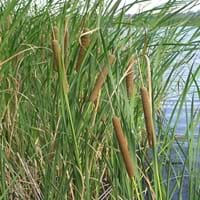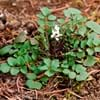Life Span
Annual
Perennial
Origin
Europe, Asia
North America, United States, Northeastern United States, Mid-Atlantic United States, Southeastern United States, North-Central United States, Central United States, Western United States, California, Canada
Types
Admiral Pepper,Bell Pepper,Mohawk Pepper,Yolo Wonder Pepper
Not Available
Number of Varieties
Not Available
Habitat
Cropland, Oil fields, Waste areas
Bog Garden, Ponds
USDA Hardiness Zone
4-9
3-10
AHS Heat Zone
Not Available
10-1
Sunset Zone
Not Available
21,22
Habit
Clump-Forming
Thicket/Colonizing
Flower Color
White
Light Yellow, Light Green
Flower Color Modifier
Not Available
Not Available
Fruit Color
Green, Tan
Brown
Leaf Color in Spring
Green
Green
Leaf Color in Summer
Not Available
Green
Leaf Color in Fall
Green
Green
Leaf Color in Winter
Green
Not Available
Leaf Shape
Egg-shaped
Flat, Narrow
Plant Season
Not Available
Summer, Fall
Sunlight
Full Sun, Partial Sun
Full Sun, Partial Sun
Growth Rate
Very Fast
Fast
Type of Soil
Clay, Loam, Sand
Loam, Sand
The pH of Soil
Acidic, Neutral, Alkaline
Acidic, Neutral, Alkaline
Soil Drainage
Well drained
Poorly Drained
Bloom Time
Early Spring, Spring, Late Spring, Late Fall, Early Winter, Winter, Late Winter
Early Summer, Summer
Tolerances
Pollution
Wet Site
Where to Plant?
Ground, Pot
Ground
How to Plant?
Stem Planting, Transplanting
Divison, Seedlings
Plant Maintenance
Medium
Medium
Watering Requirements
Prefer drip-irrigation instead of Over-head watering, Water Deeply
Needs Very high moisture
In Summer
Lots of watering
Lots of watering
In Spring
Moderate
Moderate
In Winter
Average Water
Average Water
Soil pH
Acidic, Neutral, Alkaline
Acidic, Neutral, Alkaline
Soil Type
Clay, Loam, Sand
Loam, Sand
Soil Drainage Capacity
Well drained
Poorly Drained
Sun Exposure
Full Sun, Partial Sun
Full Sun, Partial Sun
Pruning
Prune ocassionally, Prune to control growth
Remove damaged leaves
Fertilizers
All-Purpose Liquid Fertilizer
Nutrient Rich Fertilizer
Pests and Diseases
Not Available
Free of serious pests and diseases
Plant Tolerance
Drought
Drought
Flowers
Insignificant
Showy
Flower Petal Number
Single
Not Available
Foliage Texture
Fine
Coarse
Foliage Sheen
Not Available
Glossy
Attracts
Not Available
Wildlife
Allergy
Not Available
Mild Allergen
Aesthetic Uses
Not Used For Aesthetic Purpose
Cut Flowers, Wild gardens
Beauty Benefits
Not Available
Not Available
Environmental Uses
Air purification
Air purification
Medicinal Uses
Not Available
anticoagulant, Diuretic, Haemostatic, Miscellany
Part of Plant Used
Not Available
Flowers, Leaves, Root, Seeds, Stem
Other Uses
Unknown
Used as a thickener in soups, Used to make biscuits, Used to produce edible oil, Used to yield a sweet syrup
Used As Indoor Plant
No
No
Used As Outdoor Plant
Yes
Yes
Garden Design
Not Available
Dried Flower/Everlasting, Wildflower
Botanical Name
CARDAMINE hirsuta
TYPHA angustifolia
Common Name
Hairy Bittercress
Narrowleaf Cattail, Lesser Reedmace
In Hindi
बालों वाली Bittercress
Narrowleaf Cattail
In German
Hairy Bittercress
Schmalblättriger Cattail
In French
Bittercress Poilu
Narrowleaf Cattail
In Spanish
Bittercress Peludo
Espadaña de hoja estrecha
In Greek
τριχωτές Bittercress
στενόφυλλα Cattail
In Portuguese
Bittercress cabeludo
Narrowleaf Tifa
In Polish
włochaty Bittercress
Wąskolistne Cattail
In Latin
pilosus bittercress
Cattail glaucescens
Phylum
Magnoliophyta
Magnoliophyta
Class
Magnoliopsida
Liliopsida
Order
Brassicales
Typhales
Family
Brassicaceae
Typhaceae
Clade
Not Available
Angiosperms, Commelinids, Monocots
Tribe
Not Available
Not Available
Subfamily
Not Available
Not Available
Number of Species
Not Available
Not Available
Difference Between Hairy Bittercress and Narrowleaf Cattail
If you are confused whether Hairy Bittercress or Narrowleaf Cattail are same, here are some features about those plants to help you choose better. Many people think that these two plants have the same characteristics, but one can see Hairy Bittercress and Narrowleaf Cattail Information and learn more about it. Fertilizers required for proper growth of Hairy Bittercress are All-Purpose Liquid Fertilizer, whereas for Narrowleaf Cattail fertilizers required are Nutrient Rich Fertilizer. Hence, one should know the basic difference between Hairy Bittercress and Narrowleaf Cattail if you are planning to have them in your garden to enhance its beauty.
<
Flowering PlantsImportance of Hairy Bittercress and Narrowleaf Cattail
Want to have the most appropriate plant for your garden? You might want to know the importance of Hairy Bittercress and Narrowleaf Cattail. Basically, these two plants vary in many aspects. Compare Hairy Bittercress and Narrowleaf Cattail as they differ in many characteristics such as their life, care, benefits, facts, etc. Every gardener must at least have the slightest clue about the plants he wants to plant in his garden. Compare their benefits, which differ in many ways like facts and uses. The medicinal use of Hairy Bittercress is Not Available whereas of Narrowleaf Cattail is anticoagulant, Diuretic, Haemostatic and Miscellany. Hairy Bittercress has beauty benefits as follows: Not Available while Narrowleaf Cattail has beauty benefits as follows: Not Available.
Compare Facts of Hairy Bittercress vs Narrowleaf Cattail
How to choose the best garden plant for your garden depending upon its facts? Here garden plant comparison will help you to solve this query. Compare the facts of Hairy Bittercress vs Narrowleaf Cattail and know which one to choose. As garden plants have benefits and other uses, allergy is also a major drawback of plants for some people. Allergic reactions of Hairy Bittercress are Not Available whereas of Narrowleaf Cattail have Mild Allergen respectively. Having a fruit bearing plant in your garden can be a plus point of your garden. Hairy Bittercress has no showy fruits and Narrowleaf Cattail has showy fruits. Also Hairy Bittercress is not flowering and Narrowleaf Cattail is not flowering . You can compare Hairy Bittercress and Narrowleaf Cattail facts and facts of other plants too.





